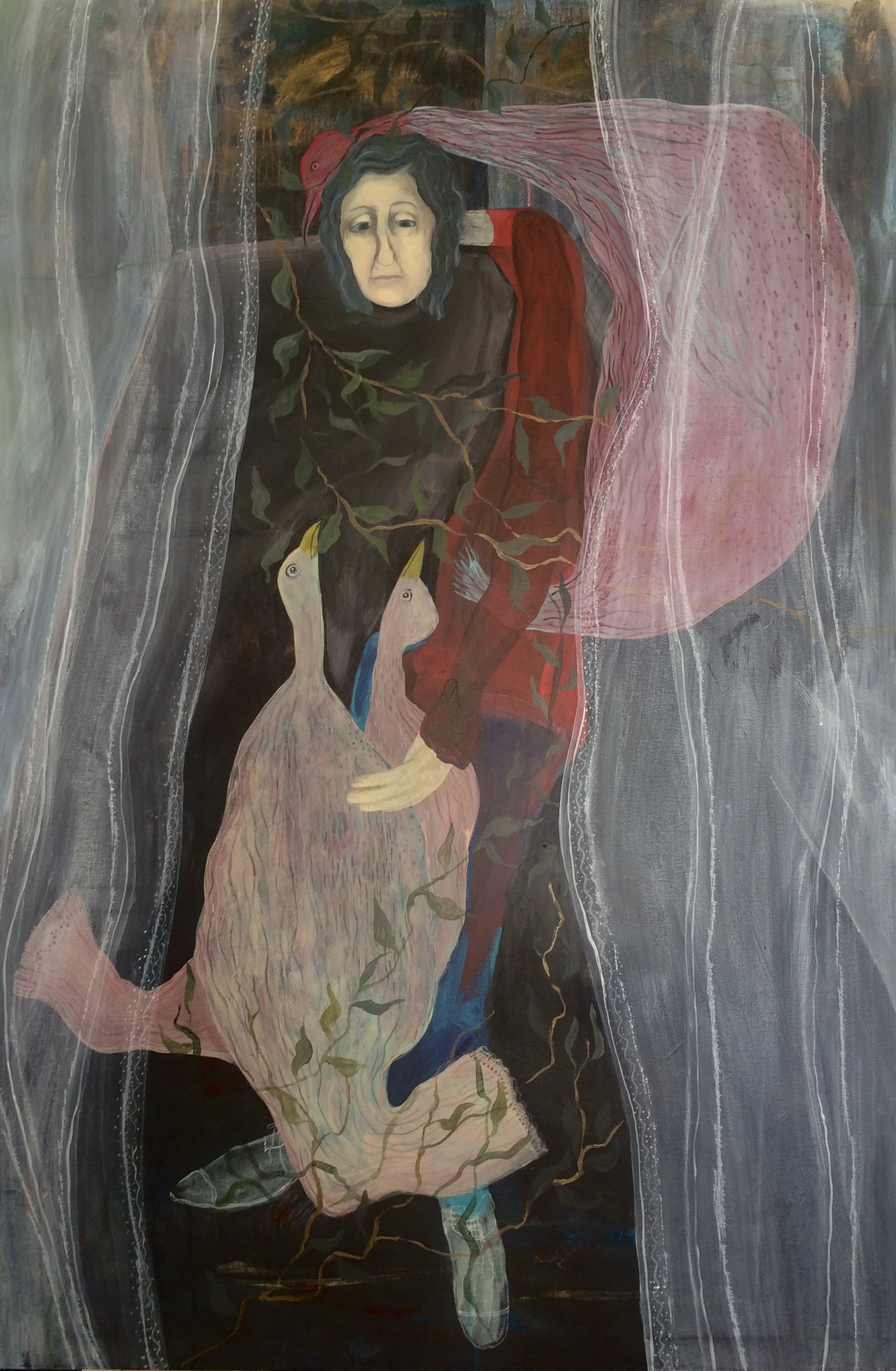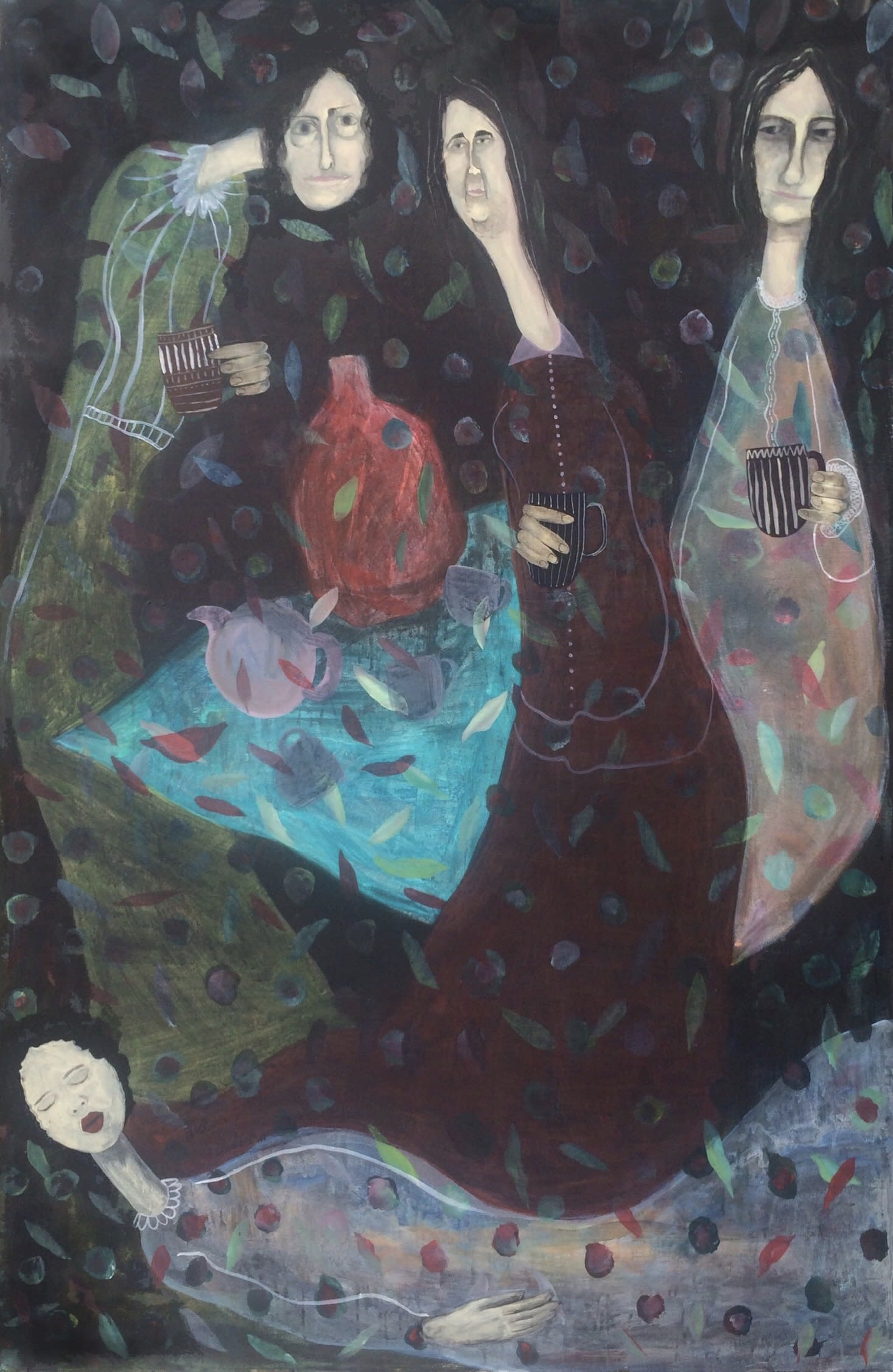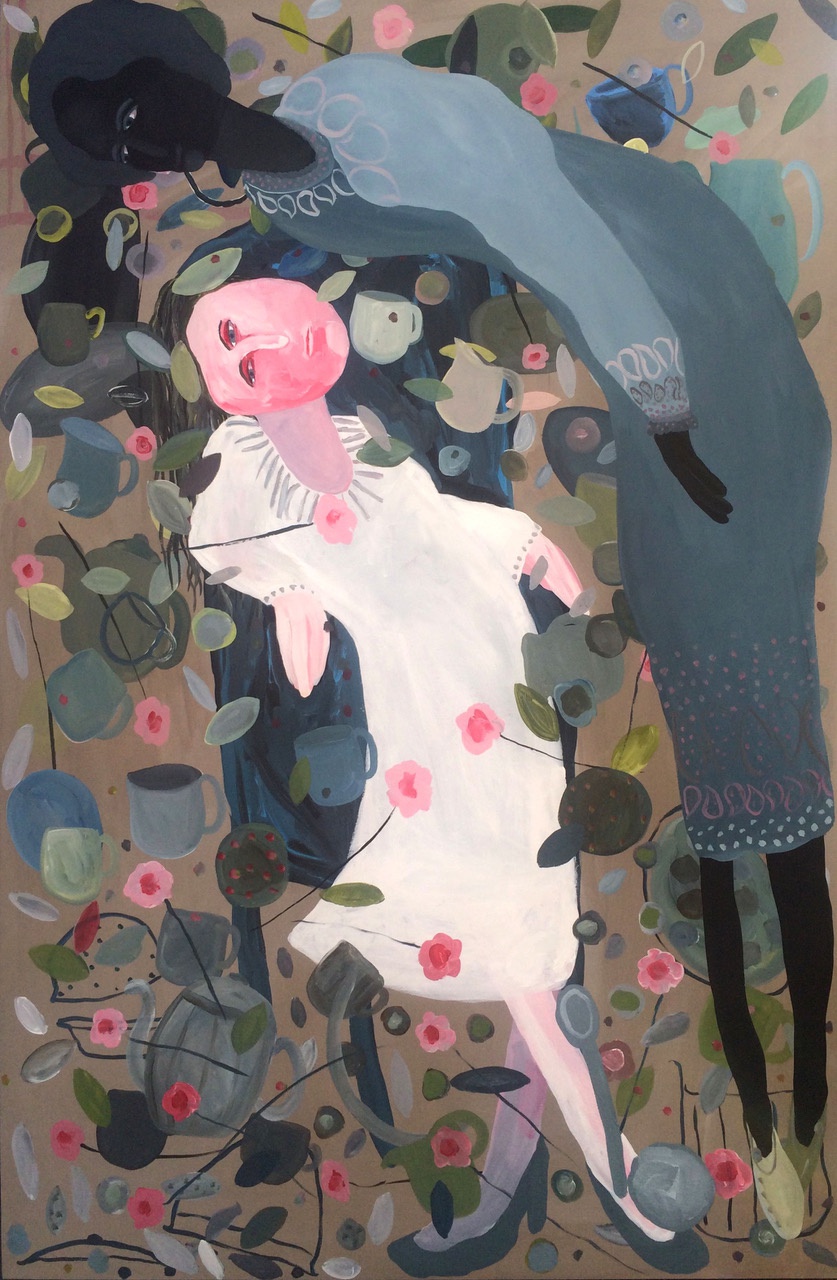
Christy Burdock's paintings and drawings manage to merge the specific with the general. Her work plays constantly, as it sweeps between suggestion, expectation and association. The work projects, with taste, touch and the perception of type, the pull back from the representation of a generalized situation, to the painting of an actual
portrait. As 'researcher' and 'drawer' during her visits to the House of Commons, for instance, Burdock loved observing the way journalists interacted with the MPs. A "news and current affairs junkie", she says she was able to watch their bodies with "a real feel for the way the world is moving around." So while Burdock's work can misguidedly be perceived as purely illustrative the artist is also imagined to be innocent by those whom she aims to represent. The resultant imagery, especially that of women who remain hidden, re-enforces the fact that no one is really ever able to recognise themselves.
A dangerous ability to embody something through perception, touch, and understanding, is seldom considered in advance.
Burdock's recent paintings seem to deal with the flipside of goodness. She is fascinated in part by the way an individual can be held through behaviour, influence and expectation within a group.

The Puritans. 2019
Sinister but dull, 'The Puritans', carry an air about them. They watch as a young woman who is the subject of their apparent good intention is severely undermined. More than passive aggressive, this almost collapsing figure at the front fast becomes as invisible as the artist who may have been called in to observe. When Burdock brings herself to a situation, she cannot help but allude to conditions that shape personal and political trauma. The empty streets and twitching curtains held within layers of diaphanous material merge the incidental with the iconic. A body balloon with sharp dark pupils, is stooping, shifting, and containing an object of attention. Working against the grain the work betrays a certain level of perversity, however. The artist rubs up against the liberal direction of play, in her sympathy for that which is hidden and shuttered behaviour.
The exhibition Politics, Sex and Religion is different in part because it is made up of painting rather than drawing. Burdock represents here a broad range of preoccupations and experience, rather than that of just one workplace. While institutions must investigate themselves and pay attention to the way they behave, a deadly inability to change hovers nearby. Burdock brings a sense of a metaphorical place to the painting and hopes that something or someone might be liberated. When drawing bordering on caricature stops being illustrative, the paint is able to embody an even more palpable atmosphere. The first section of Who has seen the Wind by Christina Rossetti; "Who has seen the wind? Neither I nor you. But where the leaves hang trembling, the wind is passing through" can be seen to allude to the invisible effects of control and behaviour.

Who has seen the wind ? 2019
Despite a desire to leave past work behind, the work is still dependant, to a certain level, on the expectation to reveal this truth beneath the surface. From carrying atmosphere to apparently hiding what you know, a painting is only able to run along beside the complexities of life. So, the opposite to fresh, this distillation of time and experience, carries a purposeful concentration of occurrence within it. The hovering figures remain frozen, virtually rooted in the physical and formal structures of history.
Sacha Craddock
Suggested Articles with Links
-
"The Intricacies of Observation in Christy Burdock’s Work"
A closer look at how Burdock captures personal and political dynamics in her art.
Read more on Art UK -
"Politics, Sex and Religion: Christy Burdock’s Recent Works"
An analysis of Burdock’s transition from drawing to painting and the themes in her latest exhibition.
Read more on The Guardian -
"Christy Burdock and the Power of Hidden Narratives"
Explore how Burdock’s work embodies the unseen forces of group behaviour and control.
Read more on Apollo Magazine -
"Sacha Craddock on Art and Atmosphere"
A deep dive into Craddock’s analysis of contemporary artists, including her thoughts on Christy Burdock.
Read more on Frieze -
"The Intersection of Caricature and Fine Art in Christy Burdock’s Practice"
Discover the balance between caricature, metaphor, and atmosphere in Burdock’s work.
Read more on Tate
